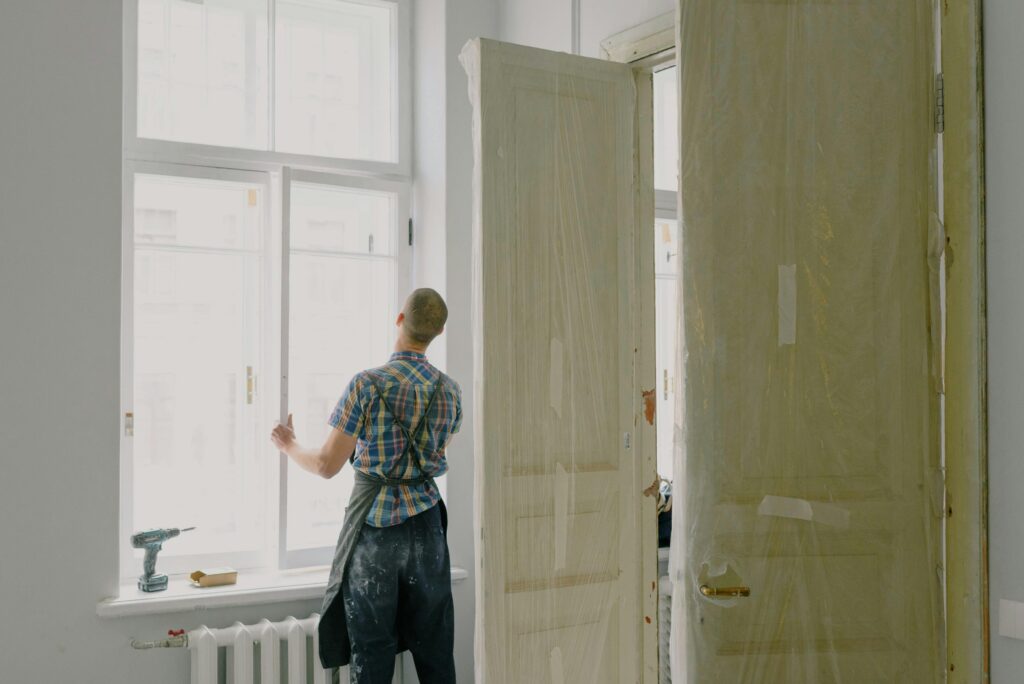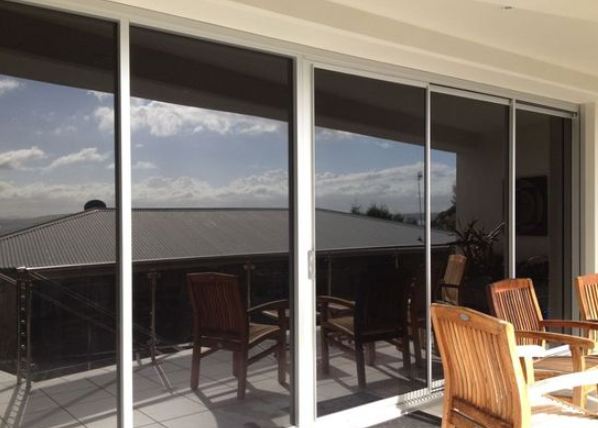Window Repair: Enhancing Your Home’s Efficiency and Comfort
Windows are an integral part of every home, offering light, ventilation, and a connection to the outside world. However, over time, wear and tear can lead to issues like cracked glass, air leaks, and inefficient seals. Addressing these problems promptly ensures your home remains cozy, energy-efficient, and visually appealing. In this article, we’ll explore essential aspects of window repair, focusing on practical solutions and expert tips to restore functionality and aesthetics and kitchen renovation
Stop Drafts at the Source With Glass Replacement
- If your windows are letting in cold air during winter or failing to keep your home cool in summer, it’s likely due to damaged glass or ineffective seals.
- Replacing damaged glass not only improves insulation but also enhances the overall appearance of your home.
- Tempered glass is a great option for improving safety and durability. Its ability to resist shattering makes it ideal for homes with children or high-traffic areas.
- Addressing cracked or broken glass ensures that your windows effectively block cold air and retain warmth, keeping your energy bills in check.
- -Fixing these issues prevents further damage to the seal and reduces condensation buildup.
Repair Sliding Glass Door Hardware for a Better Seal
Sliding glass doors are a popular feature in many homes, offering easy access to patios and gardens. However, they’re also prone to energy leaks if their components wear out. Ensuring smooth operation and a tight seal can dramatically improve your home’s insulation.

Common Problems With Sliding Glass Doors
– Worn-out hardware: Over time, rollers, tracks, and locks can deteriorate, leading to gaps and drafts.
– Uneven tracks: Misaligned or damaged tracks make it harder to close the door properly, compromising the seal.
– Handles and locks: Faulty handles or locks reduce security and allow air leaks to disrupt indoor comfort.
Steps to Repair Sliding Doors
- Inspect and clean the tracks to remove dirt and debris.
- Replace worn-out rollers to restore smooth gliding.
- Realign the tracks for an even fit.
- Upgrade to modern hardware for improved functionality and aesthetics.
By addressing these issues, you’ll enjoy a more secure and energy-efficient door that adds value to your home.
Why Choose Professional Window Repair Services?
When it comes to repair and replacement, enlisting the help of professionals ensures a job well done. Here are some reasons to consider professional services:
– Expertise in glass replacement and hardware repair for various window types.
– Access to high-quality tools and materials, such as silicone caulk, flashing tape, and insulated glass.
– Guaranteed service with attention to detail, ensuring no air leaks or drafts remain.
– Time savings and convenience, especially for complex projects like replacing large windows or addressing structural issues.
Tools Needed to Replace Windows
Replacing a window requires the right tools to ensure a seamless installation. Here’s a list of essentials:
- – Drill and driver bits for securing the frame.
- – Caulk gun for applying weatherproof sealants.
- – Tape measure and level to ensure accurate measurements and alignment.
- – Putty knife and oscillating tools for removing old caulk and glazing.
- – Shop vacuum to clean up debris during the process.
Having these tools on hand makes the job smoother and helps achieve a professional finish.
Materials Needed to Replace Windows
In addition to tools, having the right materials is crucial for a durable and weatherproof installation:
- Silicone caulk and latex caulk for sealing gaps and improving insulation.
- Spray foam insulation to fill large voids and prevent air leaks.
- Flashing tape for waterproofing and protecting against moisture intrusion.
- Wood filler for repairing damaged frames.
These materials ensure your new windows are secure, weatherproof, and visually appealing.
Window Replacement – Step by Step
Replacing a window involves careful planning and execution. Follow these steps to achieve optimal results:
- Measurement: Accurately measure the sash, rough opening, and frame to ensure a precise fit.
- Removal: Remove the old window, including jamb liners, trim, and glazing.
- Preparation: Seal the rough opening with flashing tape to prevent water and air infiltration.
- Installation: Align the new window using shims and a level, then secure it with screws or fasteners.
- Sealing: Apply caulk around the edges and use spray foam insulation to fill gaps.
- Finishing: Install trim, paint the frame, and inspect the window for any remaining air leaks.
Tools & Materials Needed to Replace a Broken Window
Replacing a broken glass pane in a wooden frame requires specialized tools and materials to ensure safety and durability. Essential items include:
- – Safety gloves and glasses to protect against sharp edges.
- – Glazing points and glazing compound for securing the glass.
- – Linseed oil and a paintbrush for preparing the wooden frame.
- – Glass cutter and putty knife for removing the damaged pane and installing the new one.
- With these supplies, you can tackle broken window repairs confidently and effectively.

Replacing a Shattered Window Glass in a Single Pane Wooden Frame
A shattered window not only compromises security but also affects insulation and appearance. Here’s how to replace it step by step:
- Removal: Carefully remove the broken glass and clean the frame using a utility knife or razor scraper.
- Preparation: Measure the pane’s thickness and dimensions to cut a precise replacement.
- Glazing: Secure the new glass with glazing points and apply a smooth layer of glazing compound.
- Sealing: Allow the compound to cure before painting for a polished look.
This process restores the window’s functionality and enhances the overall appearance of your home.
Maintaining Your Windows for Longevity
Proper maintenance ensures your windows remain in excellent condition, reducing the need for frequent repairs. Tips include:
– Regularly clean and inspect windows for cracks or signs of wear.
– Lubricate rollers and tracks on sliding doors to maintain smooth operation.
– Reapply caulk around frames to prevent air leaks and moisture intrusion.
– Use protective materials like weather stripping to enhance insulation.
By following these practices, you can extend the lifespan of your windows and enjoy a more comfortable home environment.
Feature |
Window Repair |
Window Replacement |
| Definition | Fixing specific components of the window, such as glass, seals, or hardware (locks, handles, rollers). | Replacing the entire window unit, including the frame, glass, and hardware, to restore or enhance functionality and appearance. |
| Purpose | To resolve issues like drafts, broken glass, hardware failure, or minor air leaks. | To address extensive damage, severe air leaks, or to upgrade for better insulation, energy efficiency, and aesthetics. |
| Cost | Typically lower as it focuses on specific issues. Tempered glass, seals, and hardware repairs are common and budget-friendly. | Higher cost due to the installation of new materials, insulated glass, and custom frames. |
| Time Required | Quicker to complete, often done in a few hours depending on the complexity of the repair. | More time-consuming, requiring precise measurement, removal, and installation of new windows. |
| Energy Efficiency | Restores insulation by fixing air leaks, sealing gaps, and repairing worn-out parts, improving warmth and comfort. | Offers superior energy efficiency with modern materials like double-pane or triple-pane glass, low-E coatings, and advanced seals. |
| Longevity | Provides a temporary or medium-term solution. May need repeated repairs if the window is old or structurally weak. | Long-lasting solution, with new windows designed for durability and resistance to condensation, weather, and daily wear. |
| Environmental Impact | More sustainable as it reuses most of the original materials, reducing waste. | Generates more waste due to disposal of old windows, but modern replacements often offer better energy-saving benefits long-term. |
Frequently Asked Questions (FAQs) About Window Repair
- When should I repair my windows instead of replacing them?
If your windows have minor issues like cracked glass, broken seals, or damaged hardware (e.g., locks, rollers, or handles), repairs are often more cost-effective. Repairing is ideal when the frame is intact, and you want to preserve the original style or save money.
- Can I repair my windows myself?
Yes, minor repairs like fixing hardware, sealing air leaks with caulk, or replacing glazing compound can often be done as DIY projects. However, tasks like replacing insulated glass or repairing structural damage may require professional help to ensure safety and durability.
- How much does window repair typically cost?
- The cost varies depending on the repair type:
- Fixing a broken seal: $50–$200
- Replacing glass: $100–$300 per pane
- Repairing hardware (e.g., locks or rollers): $50–$150
- Costs also depend on the window size, type, and material.
- How can you repair Windows?
Restart the computer and click on Troubleshoot, then select Advanced Options and click on Startup Repair.
Learn more about Powder Room Renovation


